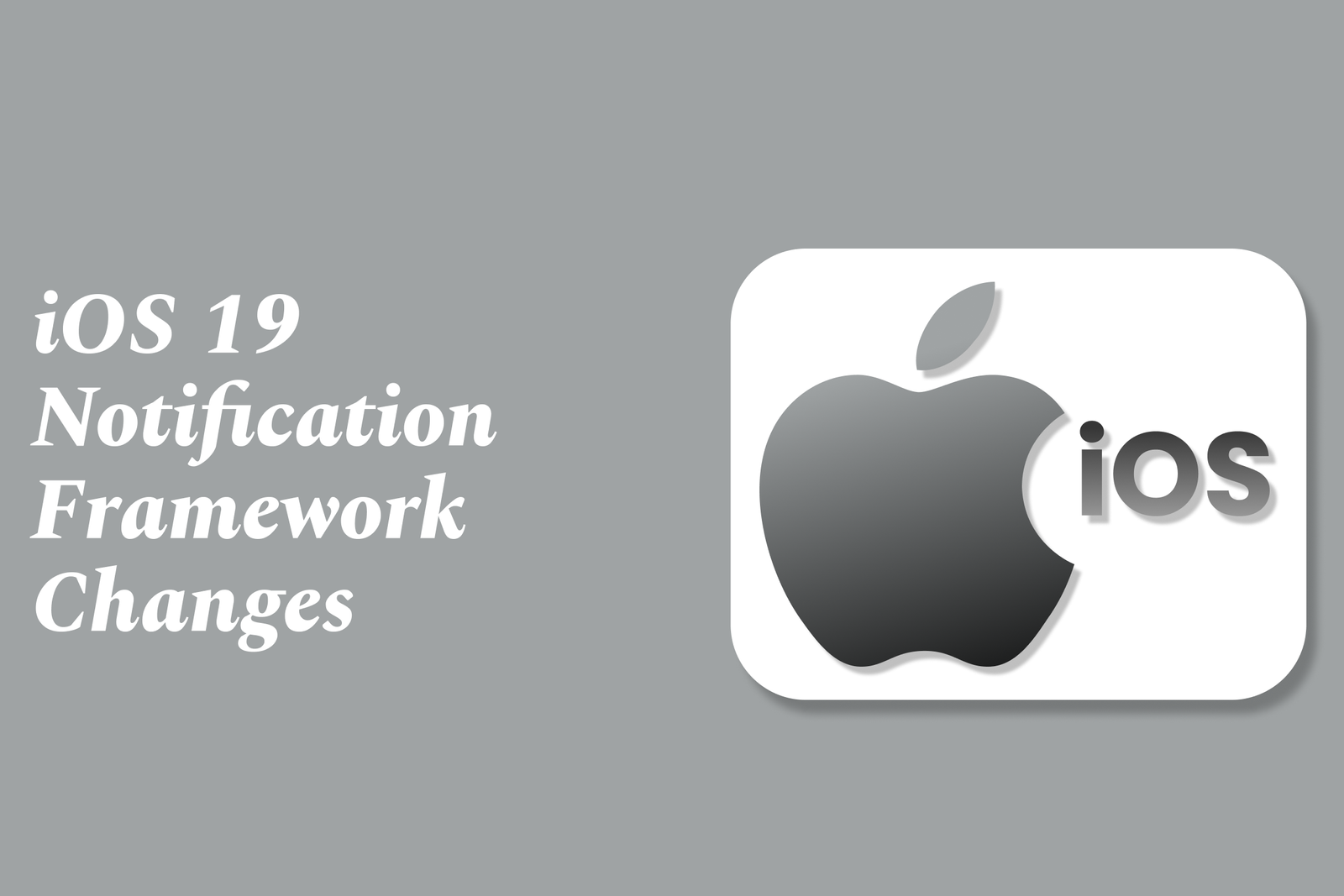Ios 19 Notification Framework Changes
iOS 19 introduces updates to the notification framework enhancing accessibility, layout control, and cross-platform consistency. Key changes include improved form input labeling, new dismissal commands, streamlined initialization, and bug fixes for better stability and user experience.
iOS 19 Notification Framework Changes
1 ) Overview of Updates
The latest updates to the Airship iOS SDK include enhancements primarily targeting the Scenes framework and JavaScript interface.
These changes focus on improving accessibility, layout control, and command functionality parity with Android.
2 ) Enhancements in Scenes
Added support for linking form inputs to labels to improve accessibility compliance.
Introduced container item alignment options, allowing developers to adjust the natural alignment within scene containers.
3 ) JavaScript Interface Improvements
A new dismiss command, `UAirship.dismiss()`, is added to mirror the behavior of Android’s `UAirship.cancel()`, enabling consistent cross platform dismissal handling.
4 ) Initialization and Setup Simplifications
Deprecated Airship.takeOff methods that rely on launchOptions for streamlined initialization.
Updated `takeOff` to be callable before the application delegate setup completes, accommodating modern app lifecycle setups.
5 ) Bug Fixes and Stability Improvements
Resolved a stack overflow issue related to using Scenes with iOS 26 beta.
Addressed crashes linked to AirshipWorkManager and AirshipChannel by implementing workarounds.
Fixed race conditions in Scene asset file operations, improving reliability in file management.
Addressed a crash caused by constraints updates when in app views were no longer in the view hierarchy.
Resolved memory inefficiencies by reducing unnecessary temporary array allocations in background work management.
Fixed user interface interaction bugs such as the need to double tap NPS survey scores.
6 ) Accessibility Upgrades
Improved VoiceOver support ensuring toggles, checkboxes, and radio inputs remain fully accessible.
Added accessibility header traits to section titles across Message Center, Preference Center, and other UI components to facilitate easier navigation for screen reader users.
7 ) Conclusion
These updates represent incremental but significant improvements to iOS notification and interaction frameworks, focusing on accessibility, developer ease of use, and platform consistency.
Developers targeting iOS 19 and iOS 26 betas should apply these updates for optimal notification experience and compatibility.
https://justacademy.in/news-detail/apple-vision-pro-sdk-launch:-ios-apps-for-xr
https://justacademy.in/news-detail/android-auto-updates-and-new-features
https://justacademy.in/news-detail/flutter-community-meetups-in-2025
https://justacademy.in/news-detail/how-react-native-is-helping-build-inclusive-apps
https://justacademy.in/news-detail/ios-19-background-tasks-api-improvements
Related Posts
In 2025, top Angular libraries offer modern, feature-rich components and tools for building dynamic web apps. From powerful data grids to low-code platforms like UI Bakery, these libraries enhance development speed, UI design, and scalability, making them essential for Angular developers.
Migrating from AngularJS to Angular 17 involves gradually upgrading your app by running both frameworks together using tools like ngUpgrade, rewriting components in TypeScript, and adopting Angular’s modern architecture to enhance performance, maintainability, and long-term support.
Angular state management tools help organize and handle app data efficiently, improving scalability and maintainability. Popular options include NgRx for robust, RxJS-based patterns, and newer Signal Store solutions that offer simpler, reactive approaches integrated tightly with Angular’s latest features.
RxJS in Angular empowers developers to manage asynchronous data streams with powerful operators like `forkJoin`, `combineLatest`, and `zip`. Mastering these key operators in 2025 is essential for building efficient, reactive applications that handle complex event sequences seamlessly.
Angular performance optimization in 2025 focuses on improving app speed and responsiveness by using techniques like OnPush change detection, lazy loading, efficient data caching, and AOT compilation. These practices reduce load times, enhance user experience, and ensure scalable, fast Angular applications.
In 2025, Angular remains preferred for large-scale, enterprise apps with its robust, all-in-one framework, while Vue attracts developers seeking simplicity and fast development for smaller projects. Both frameworks excel, with choice driven by project needs and team expertise.
Angular Signals are a new reactive primitive in Angular 16 that enable fine-grained, efficient change detection by automatically tracking dependencies and updating only affected parts of the UI. They simplify state management and boost app performance, revolutionizing Angular's reactivity model.
Angular interview questions to prepare in 2025 focus on core concepts like components, directives, data binding, routing, and dependency injection, along with TypeScript mastery and latest Angular features to ensure strong practical knowledge for building scalable, efficient web applications.
AngularJS reached its official end of support in January 2022, meaning no further updates or security patches. To ensure app security and performance, developers should consider migrating to modern Angular versions or seek third-party long-term support options if immediate migration isn’t possible.
The Angular Roadmap 2025 highlights upcoming features focused on improving developer experience and performance, including zoneless Angular, Signals integration, enhanced Forms, async data handling, improved HMR, and expanded Angular Material/CDK enhancements, driving modern, efficient web app development.










